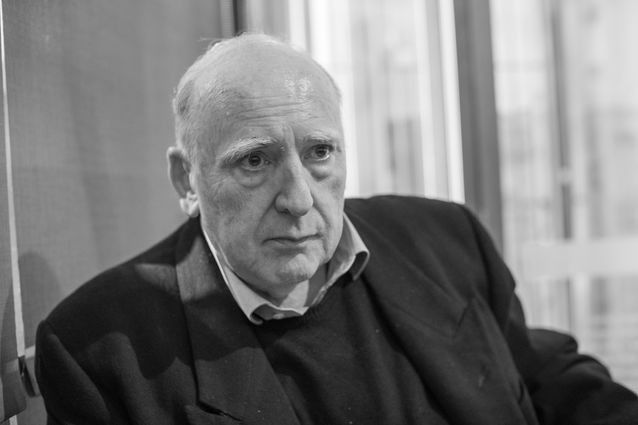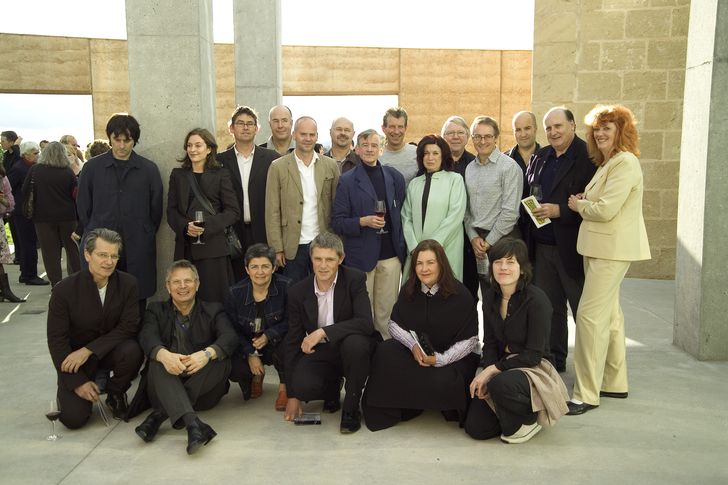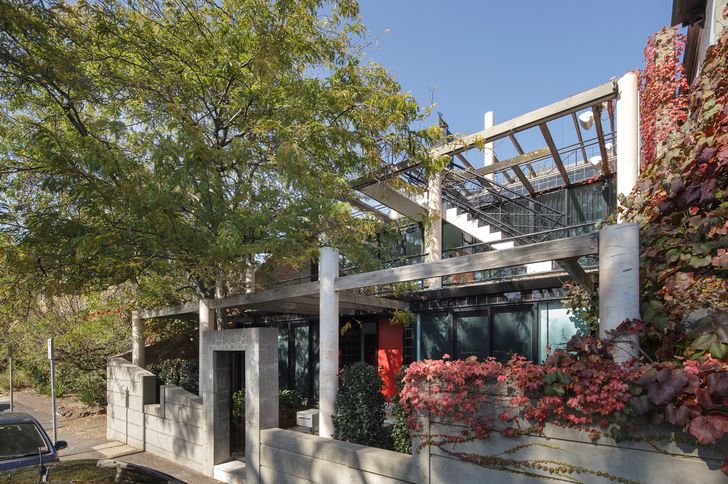Mainly interested in states of mind in which his creations could immerse people, Allan Powell followed a unique path in architecture. He was delighted when he learned that visiting European architects, who sat in St Kilda’s Di Stasio restaurant (1988) shortly after it opened, took an hour to realize that the alluring interior had been designed . (Exactly what Powell had hoped for, when he designed it!) Explaining this, he spoke of his childhood in St Kilda – he was ‘lost in amazement at the way the late afternoon sun would capture the wide tarmac surface of Fitzroy Street and match that with the surface of the bay, the glittering gold beyond. Further on: “At Luna Park [I] walked through a turquoise wall in a yellow room, climbed onto a red platform and encountered a small train. Dislocation and extreme sensory stimuli created an environment in which all functionality seemed lost. [I] determined that effects such as these piling up on [me] on all sides in [my] childhood was what architecture was.1
In this belief, Powell created a body of work much admired by clients and lay connoisseurs as well as colleagues in Europe, though rarely acclaimed by the local architectural establishment. He enjoyed being outdoors instead, describing with some delight how other architects looked at his buildings and couldn’t see anything. He also liked the concealment of detail that often delineated works that other architects boasted about. Builders, he says, would complain that he gave them little more than, say, the realization of a perfectly boundless surface that made a shimmering boundary to a “shaded” space. He read voraciously, mostly novels dealing with social mores, and often referred to Henry James or Emily Dickinson or, lately, Jonathan Franzen. A keen observer of our way of life, he admired the ease with which Guilford Bell’s plans dealt with the social nuances of Australian life.
Di Stasio restaurant in St Kilda (1988).
Image: Dianna Snape
What did he mean by “states of mind”? In a hurry, he resorted to negatives: “Mies’ perfection of detail and logic…is precisely what [I] do not aim. Scarpa’s obsessive details may suggest and reveal dark and convoluted processes, but they’re too prescriptive, they tell you what to live for, they don’t put you in a state of mind.2 He was looking for “the surprise, [to] dislocate reason… [to] stupid excitement… [to enable us to] see new patterns: poetry, theater and architecture present multi-sense states…” He wanted entering one of his buildings to be like getting on a boat and thus embarking – with a mental balance of your foot – on “dreamlike states in which the detail is acute but slippery. Further: “In these states of mind, there are several layers of senses which deactivate the emotional excitations, [resulting] in several streams of excitement at the same time… greed, hatred, anger, sexual desire… melting. About entering the Tarrawarra Museum of Art (2003) he said: “You are faced with a slightly curved wall… Nothing there…”3
Allan Powell and a group of architects at the Tarrawarra Museum of Art (2003).
Picture: John Gollings
“Prosaic in plan”, Powell’s designs consisted of “Apollonian forms set in a field, low energy, low meaning, a symphony of horizons”. He aimed for an architecture that “you make yourself”. “In search of completion, the imagination scans the brain and creates metaphysical images from all that can be called memory. Although we are so “confined”, this is the reality we are aware of.” This reality, he asserted, “seems profoundly richer than the outer reality”.
He has given up on types of plans: “I don’t know what a house is…”, said this designer of several of Melbourne’s finest homes – including Di Stasio House (1993) and Davies House (2003 ). He could have said the same for his public buildings, which include two buildings for RMIT University: Building 94 (1996) and the Bundoora West Lecture Theater (2013). Much loved, they also deal with “states of mind”. He wanted each work to be a “mask or painting made of the highlights of a car, a pile of wood, a puddle, the rays of the setting sun…”4
Crigan House (1989).
Picture: John Gollings
Those who spend time in an Allan Powell space will know precisely what it all means. Like some of his Italian peers, Powell enjoyed the decorative arts. He collected art glass and also had a remarkable collection of paintings, including some by Jenny Watson and Peter Booth. At home, where the rooms had that indeterminate character that he liked, these paintings were stacked against the walls. It was as if hanging them bound them together, ending their autonomy as created entities. Hanging them would delineate the wall surfaces, making them simple walls, rather than calm Apollonian forms, lodged on the platform on which the house was assembled. Allan Powell has created a very special architecture, which Australia will do well to cherish.



